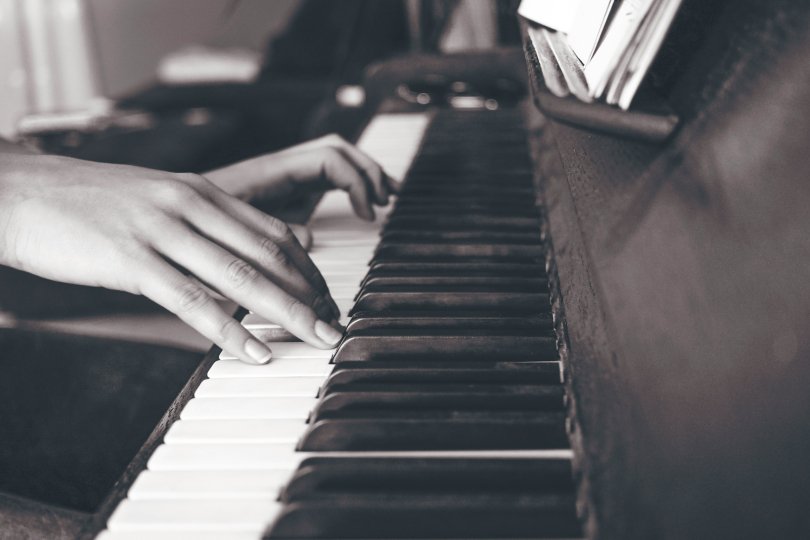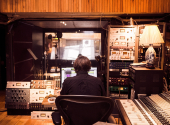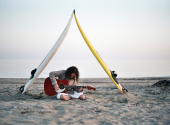
5 Unpopular but Effective Rules for Practicing a Musical Instrument
It's Friday again and with it a new batch of practical insights, hints and tips for your musical life – which naturally includes practicing your instrument. An activity praised by some as a form of zen relaxation and hated or dismissed as a necessary evil by others. Also, an activity you can't skip if you want to play your favourite riff, avoid awkward moments at rehearsals and refrain from throwing in the towel (or the guitar) on stage. Recently, I was reminded once again that the path to the gingerbread house with its sweet reward indeed leads through the dark forest and practice is simply a must – and also that few other activities are as guaranteed of certain success and return on the effort invested. You simply can't miss the target, you just have to avoid a few unnecessary mistakes and dead ends. And today's article will be about some of them.
1. If you can't play it slowly, you won't be able to play it fast
"Play slow first, then play faster." They may have told you that in your music class – and you didn't believe them. After all, the original song is fast as hell, so you want to play it fast too, and ideally right now! But fine motor skills and brains don't work that way. You need to patiently and repeatedly teach your hands the right movements and you need to do it in slow motion (like when Dory the fish talks in Finding Nemo), often breaking the section into small pieces and working on each one over and over again to build muscle memory.
It's a bit of a drill, but I've learned two tips from my piano teacher which have proven useful (among many other piano life-hacks):
- The "eye for an eye" rule: you have to play the problematic part correctly as many times as you played it with a mistake so that the wrong link in your brain is "rewritten".
- The "4 attempts in a row" rule: if you manage to play a given section four times in a row without making a mistake, it can be considered relatively well practised – but if you mess up once, the previous successful attempts are erased and you start from scratch again.
Then it's time to try to play the part a little faster – but not yet at the final deadly tempo. It's good to try two or three "intermediate speeds" and in each of them find that golden moment when playing is already a challenge, but at the same time you are still in control of your actions, you don't break out in a sweat and your hands don't swell with effort and stress. Once this happens or you get stuck, you need to slow the pace down a bit again and wait for your body to get used to the speed.
Another important task is to integrate a difficult passage into the whole. I'm sure you remember this from your early days as a musician. You played the first three notes of "Row, row, row your boat" pretty fast.. But then you hit "merrily, merrily" and the tempo dropped dramatically – help me, there are too many notes in a row! Taming your ego and your impatience and slowing down from the start so that you can play the whole piece – including the easier and harder parts – in one go and at the same tempo, is seemingly boring, but essential to your ability to play smoothly.
If metronome is a dirty word for you, try the Music Speed Changer app, which can slow down and speed up the tempo of a track without decreasing sound quality and changing the pitch of the tone (and it can even loop the selected part and transpose the track up or down by semitones if you want). It's great to hear, for example, Ozzy singing "Noooooo moooooore teeeeears" in slow motion while learning the bass line by ear.
2. Take it apart and put it back together
We all know the fastest triplet for violists – the opening melody of "Für Elise". But how many people can recall anything from the middle section of this classic banger? The opening bars are the best to learn because they are the catchiest and one is not yet tired. And besides, a lot of people know the beginnings of songs best simply because if they get stuck at a certain point, they start over from the beginning every time. Children often do this because they perceive music rather as a 3D ball of emotions and sounds and are only just learning to perceive compositions as a linear process that has a beginning, a progression and an end.
It's good to learn to start playing from places which make sense in terms of the formal structure of the piece (verse, chorus, bridge or perhaps the beginning of a chord sequence, regular eight-bar units and so on) That can be useful both for rehearsals with a band and also in case you play solo and, God forbid, you get stuck in the middle of a tune – if this happens right at a concert, it's essential not to go back to the place of the disaster, but to jump forward, if possible. Even if there is a repetition, you will be able to get through the dangerous section more easily.
It is also a good idea to pick out several micro-parts from the song and practice them over and over again in the "looper" style (you can use the above-mentioned "4 attempts in a row" rule as well as the rule of "rewriting" incorrect attempts with the same number of correctly played repetitions). Some people like to take small breaks in between repetitions to put their fingers back to the starting position, others like to loop the spot in a "skipping record" style without pauses.
However, after breaking it down to pieces, it is worth playing the whole composition again at the end of each practice session, so that the brain can retain the last, reassembled version.
3. Too fresh or the law of ageing
During my studies at the conservatory, I often got up at 5:30 so that I could be at school at 6:30, practice at least a piece of an etude and not look so unprepared at 7:45 in class. Sometimes my short-term memory worked and the hastily crammed piece was nicely performed in the lesson because my head and hands didn't even notice that I had moved from the practice to the hot ground of the music lesson.
Things were worse, however, if I had started practising the night before – not only was I dreaming all night about Beethoven, scolding me with his ruffled hair and bulldog face, and crushing my hands with the piano fall board, but I usually completely failed the next day at the lesson. And the teacher usually laughed indulgently at my "but it went well at home yesterday" whining. She knew that the practised material was too fresh – the body hadn't had time to process it yet, on the contrary, it was rather tired from the workout, both mentally and muscularly, and needed to recover first.
Sometimes it can take weeks for a certain technically tricky spot to "yield" – even though you practice diligently and do everything right, it feels as if an invisible barrier has formed in your head and you are unable to achieve the necessary proficiency, tone colour or expression. Frustration and anger build, you feel incompetent, and you'd rather throw the instrument and yourself out the window. And then one day you wake up, try to play and – there it is! The accumulated quantity has suddenly turned into quality. It works that way in sports and other activities, and it's good to remind yourself that not being good at something for a long time is not a permanent condition. With consistent play, one day it will "magically" shift and you will level up.
4. Overpractised or the law of letting it sit
Okay, you've overcome a few crises, you haven't destroyed your instrument in anger with an axe, and you're sounding great. You're feeling at the peak of your powers – but there's still one week to go before the gig. So why not try to play the song a little faster than you're going to play it with the band? As tempting as it sounds, try to tame your passions and do the opposite – instead of frenetically practising your parts at crazy tempos, try playing the whole song extremely slowly without losing the flow. Otherwise, there is a risk that technically demanding passages will be "overplayed", individual notes will start to blend uncontrollably and your hands won't listen to you. Sometimes the only solution is to set the song aside and wait for your brain to calm down again.
Also, before the performance, don't break the musical material into small pieces and don't get caught up in polishing individual bars, because there is a risk of creating a mental knot, which will be difficult to get through without stress. Try to "smooth out" the whole piece, play it as a whole, and instead of focusing on your hands and technique, try to feel good while playing and concentrate on your surroundings. Another good exercise is to play the whole piece as closely as possible to the way you would play it in concert – maybe three times in a row with only a small break to rest. You'll see how much concentration it takes.
Try playing in different environments, positions, lighting and even in concert clothes (it was quite unpleasant when I once lost a piano pedal in a flood of frilly skirt. I spent half of the composition desperately tapping under the piano, looking for it, in vain...).
5. The fiercer, the worse
And finally, the hardest rule of all: everything we've just listed here should ideally be done with ease, joy, and without a fierce urgency or desire for perfection. Easy to say, of course, but harder to do in practice. In short, you need to find an ideal (sort of floating) position between technical practice and relaxed playing.
From a certain level, you can't do without practice and the tips listed above can make your musical journey easier. At the same time, if you focus too much on a technical problem, or if you experience a frantic sense of responsibility and stress from failure before an upcoming performance, or if you fixate on the prospect of the laurels and ovations that await you after a concert success, your body will usually let you know very quickly that this is not the way to go. You may suffer from muscle aches, tendonitis, memory lapses, vocal indisposition, anxiety and other ailments. And you will hear and feel the strain in your music too – not for nothing do singers say, "Effort doesn't sound."
And what practice tricks and principles have you encountered on your musical journey? What would you recommend to others and what is specific to your instrument? Let us know in the comments below the article on Facebook.
If you have found an error or typo in the article, please let us know by e-mail info@insounder.org.





